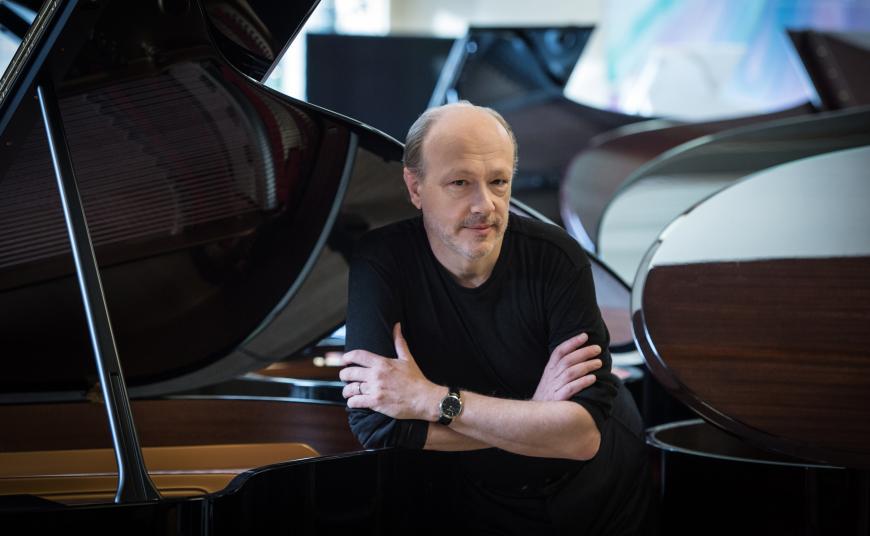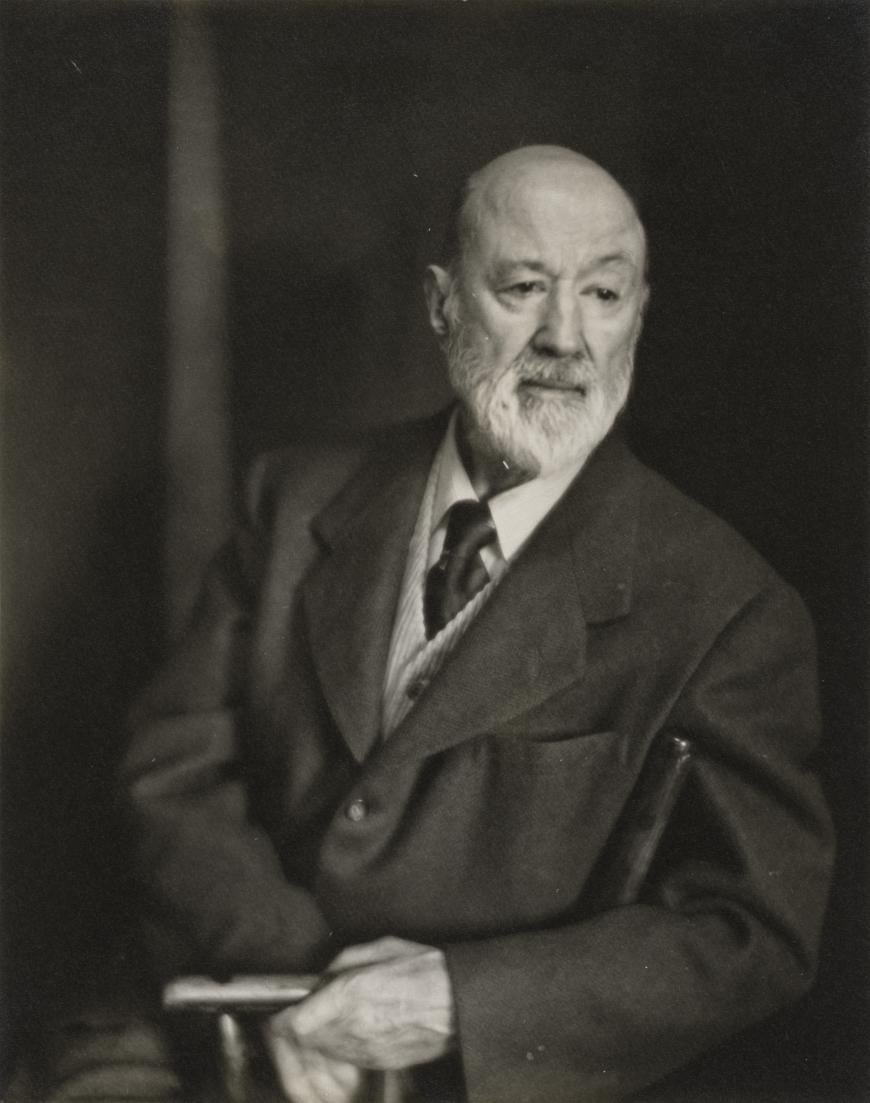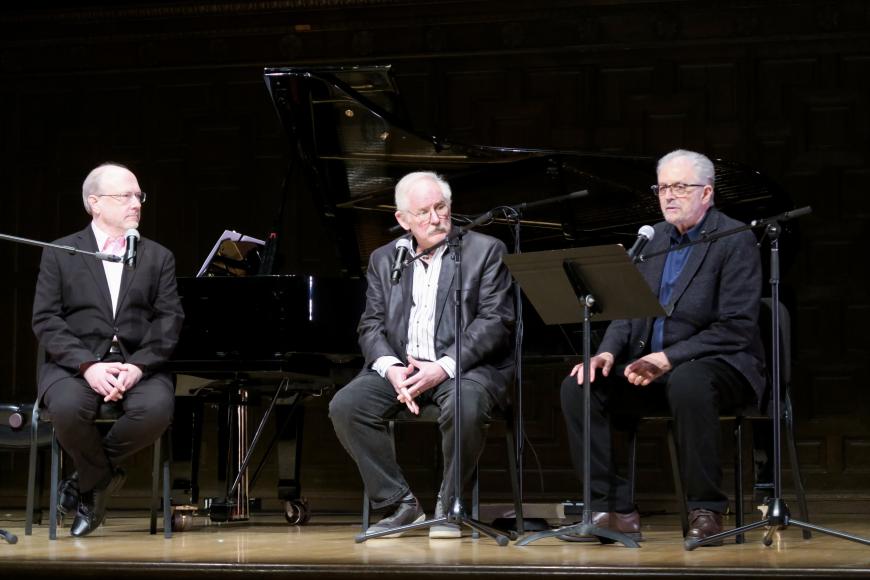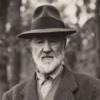
On Saturday night, the Bay Area new-music collective Other Minds celebrated its 30th anniversary with a concert much like its first in 1993. Then, the composer György Ligeti discussed his recently composed Piano Etudes, which were played by Volker Banfield in their American premiere at UC Berkeley’s Hertz Hall.
In 2023, Other Minds celebrated its three decades of existence by presenting a performance of Charles Ives’s towering “Concord” Sonata by the eminent Canadian pianist Marc-André Hamelin in Littlefield Hall at Mills College in Oakland. But while Other Minds hopes to thrive for decades to come, Mills College itself — once a bastion of experimentalism — has recently eliminated its music program, along with all its arts and humanities degrees, after merging with Northeastern University, ostensibly to prevent its complete closure. Though Hamelin’s performance was an incredible achievement, unanswered questions remain about the future of the American experimental tradition that Ives inaugurated.

Noted for his commanding performances of lesser-known works from the 19th and 20th centuries, particularly the technically demanding music of pianist-composers, Hamelin has recorded the “Concord” Sonata twice — for New World Records in 1989 and then for Hyperion in 2004. In concert, he played the 45-minute sonata from memory, a wildly impressive feat given the work’s gargantuan complexity.
The Ives sonata is not an inviting piece, but it’s also not as alienating as later works of high modernism. Its aesthetic is rather one of oversaturated, intensified Romanticism. Ives’s harmonies are dense, layered, at times confusing; he often constructs chords out of tone clusters or superimposes multiple keys at the same time. But the result is never ugly. Indeed, this sonata shows Ives’s talents as a discerning tonal colorist. When he calls for the use of a wooden stick to depress clusters of black keys in the second movement, it is not to create a brash, percussive effect but rather to produce pianissimo bell-like echoes of astounding delicacy.
Hamelin’s performance was preceded by a lecture by Kyle Gann, a historian of American modernist music who has written a definitive book on the “Concord” Sonata. The composition was inspired by Ives’s interest in the American Transcendentalists, with four movements based on and named after Ralph Waldo Emerson, Nathaniel Hawthorne, the Alcott family, and Henry David Thoreau. Gann explicated the structure and inspiration for Ives’s piece, which, as he pointed out, was unusual in its time. Ives was well known as an insurance executive; Gann joked that the score, which the composer mailed to a few hundred figures in the music field, was like “if Mark Zuckerberg wrote a piano sonata.” Moreover, there was little precedent for a piano sonata with such a detailed program, much less one based on such recent and proximal figures — Bronson and Louisa May Alcott were still alive in Ives’s youth.

Hamelin was on hand to provide live demonstrations of the sonata’s thematic material, giving the audience a foothold in Ives’s kaleidoscopic composition. As Gann noted, however, although Ives dedicated a book-length essay to expostulating his interpretations of the Transcendentalist writers, the composer is vague about the direct connections between that literature and his piece. And while previous generations grew up reading Hawthorne and Louisa May Alcott, and hearing songs like “Columbia, Gem of the Ocean,” Ives’s frequent references and quotations draw on a cultural patrimony that can no longer be taken for granted. Fortunately, the music continues to speak for itself.
Hamelin’s performance, which took place after an intermission, was nothing short of spectacular. From the outset, the pianist played with his characteristic crisp tone, allowing Ives’s often convoluted, contrapuntally thick textures to shine with crystalline precision. In lyrical sections, such as the serene folk tunes in the “Alcotts” movement, he found a warm, caressing tone that was not languid or sentimental. In the “Nature” episode of the “Emerson” movement, in which Ives evokes the overtone series, Hamelin’s left hand flitted effortlessly over the keyboard like a skipping stone. In quieter passages, where Ives withdraws from expressionist intensity, Hamelin attained an excruciating tenderness.
Hamelin is probably one of the only pianists alive who could make such a titanic work sound almost effortless. In some of the more chaotic, burlesque sections of the “Hawthorne” movement, the pianist achieved a machine-like perpetuum mobile quality reminiscent of Sergei Prokofiev’s Toccata.
But by obscuring the magnitude of the technical challenges, Hamelin also sanitized the gruffer, rough-around-the-edges bite of the music. His body language was restrained throughout, his posture composed and refined. This level of decorum is certainly preferable to a mannered, exaggerated style, but it nevertheless masked some of Ives’s more eccentric decisions. In “Hawthorne,” the composer evokes a marching-band tune in chipper A-flat major — undoubtedly a comic moment — but Hamelin’s straitlaced rendition did not elicit so much as a chuckle.
Other Minds called the concert “From Discord to Concord,” a pun that suggests a resolution, a coming together. But as Mills College closes its doors, putting an end to a great breeding ground of American experimental music, the possibility of a vibrant, institutionally supported avant-garde in this country seems imperiled. Will the next generation of musical rule breakers support themselves, like Ives did, with corporate day jobs? To paraphrase a line from Walden — “you cannot kill time without injuring eternity.”



